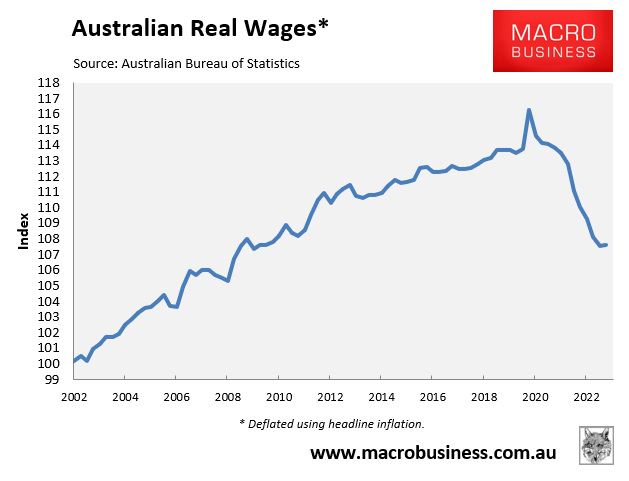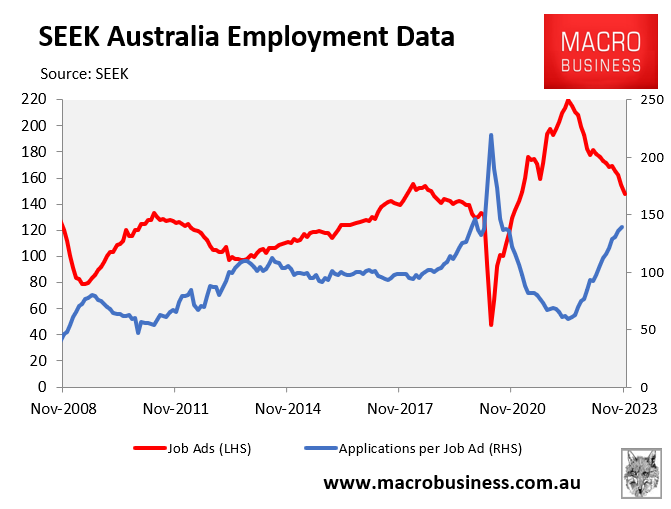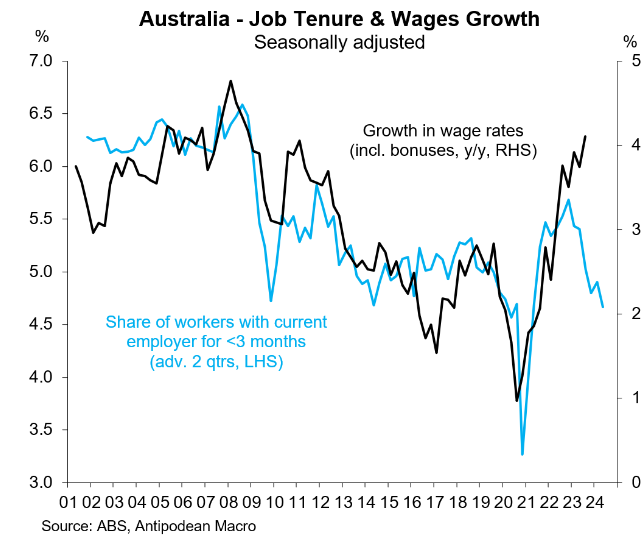Australian real inflation-adjusted wages have suffered their biggest collapse on record, plunging 7.3% between June 2020 and September 2023, to be tracking at the same level as June 2010:

Australian households have suffered a similar decline in real per capita household disposable income, which is now tracking at 2012 levels:

The New Daily’s Matthew Elmas has interviewed a bunch of labour market economists on the outlook for Australia’s jobs market in 2024.
The general consensus is that Australia’s unemployment rate will continue to rise due to a combination of slower demand for workers and strong growth in labour supply (primarily via high net overseas migration).
In other words, the strong growth in the number of people seeking jobs will continue to whittle down the huge stockpile of unfilled jobs that built up over the pandemic, resulting in rising unemployment.
Indeed, Melbourne professor Jeff Borland explained that the COVID-19 workforce shortages have taken time to wash through the market, which is one reason why it has taken so long for the realities of a slowing economy to show up in the unemployment rate.
Borland cited a “big gap” that developed between 2021 and mid-2023 between employment levels and available jobs, which has subsequently started to close as a result of rising interest rates, a slowing economy and rising labour supply.
“What you’re most likely talking about is a continued slowing of employment and jobs growth”, Borland told the New Daily.
“I don’t think we’re talking about a sustained period of negative employment growth”.
“We’re eating into that stock of vacancies”.
“There has, in fact, been a substantial slowing in jobs growth over the past year”, Borland said.
Borland’s explanation makes a lot of sense.
The number of job ads fell sharply last year (but still remains elevated), while the number of applicants per job ad has soared way above pre-pandemic levels (reflecting the combination of falling ads and soaring labour supply):

Meanwhile, the surge in applicants per job portends a sharp rise in Australia’s unemployment rate this year:

Rising unemployment also means another year of falling real wages, according to Matthew Elmas:
“That’s because wages often reflect demand for labour and how high workers can bid up their pay packets because their skills are scarce”.
“As the number of available workers relative to the number of jobs that need doing grows, that worker bargaining power also starts to erode”.
“The Reserve Bank anticipates Wage Price Index (WPI) growth will slow from 4% in December 2023 to 3.7% by the end of 2024”.
“Those outcomes suggest real wages growth (wages adjusted for price inflation) will continue to be negative over the next 12 months at least”.
That is a sound assessment and would mean that the record collapse in real wages and household incomes will likely drag on for another year.
The below chart from Justin Fabo at Antipodean Macro showing a sharp decline in the rate of job switching also portends slower wage growth ahead:

It is shaping up as a ‘lost decade’ for Australian workers.

